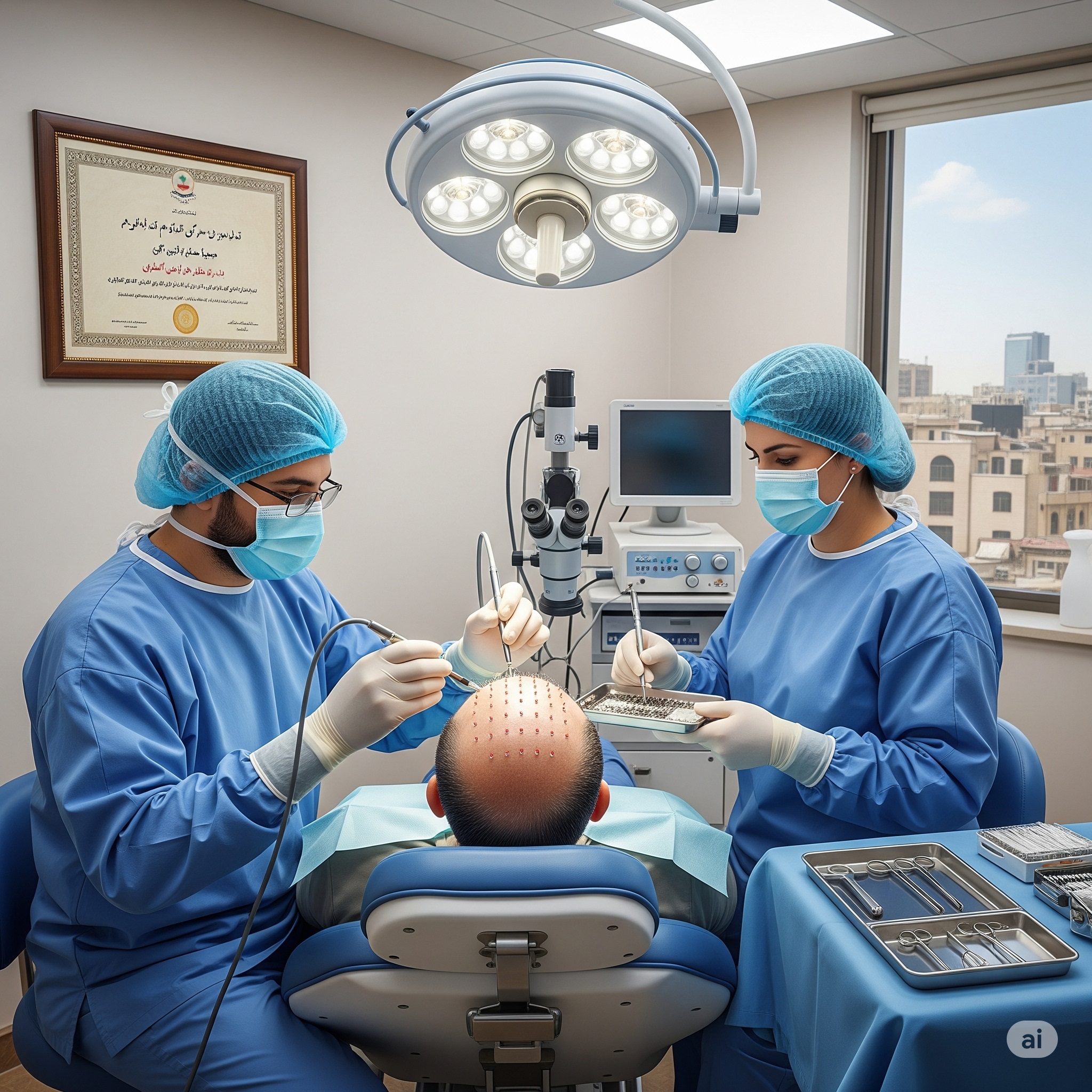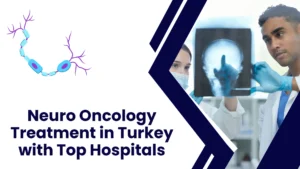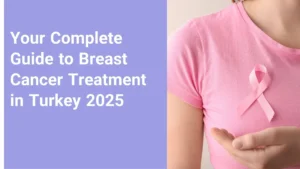Your Ultimate Guide to Top Hair Transplant Surgeons & Clinics in Iran 2025
Hair loss is a major source of stress. In fact, it impacts a person’s confidence and overall quality of life. For this reason, a hair transplant offers a permanent, effective solution. While Turkey has long been a popular destination, however, Iran is quickly emerging as a global hub for medical tourism. This is especially true for high-quality hair restoration procedures. Therefore, this comprehensive guide explores why Iran is a top choice for your surgery. Furthermore, it will help you navigate your options for finding the best surgeons and clinics in 2025. Ultimately, you will gain valuable insights. This ensures the success of your hair restoration journey.
Why Choose Iran for Hair Transplantation in 2025?
Iran’s Exceptional Expertise in Hair Restoration Surgery
First and foremost, Iran has solidified its reputation as a leading destination for cosmetic surgery. As a result, the country offers a unique combination of exceptional surgical expertise, advanced technology, and affordable prices. Consequently, patients from all over the world are flocking to Iranian clinics for their hair transplant needs. Many Iranian surgeons have received extensive training both domestically and internationally. Moreover, they remain at the forefront of the latest hair restoration techniques. These include advanced FUE and DHI methods. This blend of skill and affordability, therefore, makes Iran an incredibly attractive option. It is an ideal destination for your procedure.
Unbeatable Cost and All-Inclusive Hair Transplant Packages
In addition, the cost of a hair transplant in Iran is a mere fraction of Western prices. This is largely because of favorable exchange rates and a lower cost of living. Crucially, this allows clinics to offer competitive prices without compromising on quality. For instance, many packages are all-inclusive. They cover not just the surgery, but also accommodation, transfers, and post-operative care. This all-in-one approach, consequently, provides a seamless and worry-free experience for international patients. It ensures a smooth journey from start to finish.
Understanding Hair Transplant Techniques: FUE vs. DHI
Follicular Unit Extraction (FUE) Method
To begin with, when considering a hair transplant, it’s important to understand the different techniques available. The most common methods today are Follicular Unit Extraction (FUE) and Direct Hair Implantation (DHI). FUE involves extracting individual follicular units one by one from a donor area. This is typically the back of the head. Subsequently, these grafts are transplanted into the recipient area. The key advantage of FUE is that it avoids the linear scar associated with older methods. Thus, it offers a more natural look and a quicker recovery time. Therefore, it is a very popular choice for many patients seeking a permanent solution to hair loss.
Direct Hair Implantation (DHI) for Natural Hairline Design
In contrast, DHI is a more advanced variation of FUE. In this method, a specialized pen-like tool (a Choi Implanter) creates the recipient channels and implants the grafts simultaneously. This allows for greater precision and density. Furthermore, it gives the surgeon more control over the angle and direction of the transplanted hair. As a result, DHI is particularly beneficial for creating a high-density, natural-looking hairline. Many top Iranian clinics have adopted both of these state-of-the-art methods. This ensures you have access to the most modern and effective hair restoration treatments. In summary, this improves the likelihood of a successful outcome.
Key Factors for Choosing the Best Surgeon and Clinic in Iran
Assessing Your Hair Transplant Surgeon’s Credentials and Portfolio
Choosing the right surgeon is undoubtedly the most crucial step in your hair transplant journey. You should look for a professional with a proven track record of successful results. Specifically, examine their credentials. Many top surgeons are members of international organizations such as the International Society of Hair Restoration Surgery (ISHRS). This indicates they adhere to global quality standards. Furthermore, you should ask to see a portfolio of their before-and-after photos. Use this to assess the naturalness of their results, especially the hairline design. A surgeon’s portfolio is a clear window into their skill and aesthetic sense.
Evaluating Clinic Standards and Technology
Next, the clinic itself is a very important consideration. A reputable clinic must have modern, sterile facilities. These facilities must meet international hygiene standards to minimize the risk of infection. Indeed, this is a non-negotiable factor. You should also verify the type of technology they use. Advanced equipment, for instance, can lead to better outcomes and a smoother recovery. Finally, read patient testimonials and reviews on independent platforms. A clinic with a history of positive patient experiences is a good indicator of reliable and high-quality care. This is an essential part of your research to ensure peace of mind.
Comparison: Hair Transplant Costs by Country 2025
The affordability of a hair transplant in Iran is clearly a significant draw for many international patients. To provide a clearer picture, here is a comparison of approximate costs in different popular destinations. These are estimates. However, they can vary based on the number of grafts, the chosen technique, and the reputation of the clinic.
| Destination | Average Cost (USD) | Key Advantages |
|---|---|---|
| Iran | $1,500 – $4,000 | Iran offers highly skilled surgeons, state-of-the-art clinics, and all-inclusive, low-cost packages. Essentially, it combines world-class care with immense savings on hair restoration. |
| Turkey | $2,000 – $6,000 | Turkey has a long-established reputation as a medical tourism hub. It offers high-volume clinics and good value. |
| United States | $8,000 – $15,000+ | The United States offers advanced techniques and a highly regulated industry. However, the cost is very high. It typically includes surgery only (with other costs being separate). |
| United Kingdom | $7,000 – $14,000+ | The United Kingdom has excellent medical standards and quality control. Conversely, it has significantly higher prices than in Asia. |
How to Get a Hair Transplant in Iran: Your Step-by-Step Guide
Your journey to a full head of hair can be streamlined by following a simple process. This is especially true when working with a medical tourism facilitator. We will break down the key steps for you. First, you should start by researching potential clinics and surgeons online. Look at their websites, social media, and read patient reviews to get a good sense of their work. Then, set up an initial consultation with your chosen professional.
Step-by-Step Guide to Your Hair Transplant Journey
Step 1: Free Online Consultation and Quote
To begin your journey, it starts with a free online consultation. You can send photos of your scalp to a clinic or a medical tourism company like wmedtour.com. A specialist will then evaluate your hair loss. They will assess the quality of your donor area and recommend the best treatment plan. This is a crucial first step for receiving a personalized quote. It also allows you to communicate your goals and ask any questions you may have before committing.
Step 2: Planning Your Trip and Visa Arrangements
Once you have a treatment plan, the next step involves booking your trip. Many medical tourism companies offer all-inclusive packages. These packages handle your medical visa, flight arrangements, and hotel bookings. In this way, this support system makes the process incredibly easy. You can focus on your upcoming hair restoration procedure without any travel-related stress.
Step 3: The Day of the Hair Transplant Procedure
Upon arrival, you’ll have an in-person consultation with your surgeon. You will finalize the hairline design and discuss any last-minute questions. The surgery is then performed under local anesthesia. It can take several hours, depending on the number of grafts. Patients report little to no pain during the procedure. In fact, the experience is much more pleasant than you might expect.
Step 4: Post-Operative Care and Final Results Timeline
Following the surgery, your surgeon will provide detailed instructions for post-operative care. This includes how to wash your hair and what activities to avoid. Shock loss (temporary shedding) is a normal part of the recovery process. You can expect to see new hair growth within a few months. Crucially, full results become visible after 9 to 18 months. Therefore, following your surgeon’s advice is paramount to achieving the best possible outcome.
For a seamless and stress-free journey, therefore, we highly recommend wmedtour.com for connecting with the best hair transplant professionals in Iran. They offer comprehensive packages and dedicated support. This ensures a positive and successful experience. The right support system can make all the difference in your hair restoration journey.
Frequently Asked Questions (FAQ) About Hair Transplants
To put it simply, yes, Iran is considered a very safe destination for medical tourism. The country has a well-developed medical infrastructure and experienced professionals. Medical tourism companies like WMedtour ensure that every aspect of your trip is managed safely and professionally. This covers you from your arrival to your departure. You can trust that your safety and well-being are the top priority. Therefore, you can feel confident in your choice for a hair transplant.
Typically, a hair transplant procedure takes between 4 to 8 hours. This depends on the number of grafts needed. The process involves meticulous work by the surgical team. They extract and implant thousands of individual follicles. As a result, this requires time to perform with precision. In general, a longer duration often indicates a more detailed and careful procedure.
Yes, the results are generally considered permanent. The transplanted hairs are taken from a donor area (usually the back of the head). This area is genetically resistant to the hormones that cause baldness. Consequently, these follicles will continue to grow for a lifetime in their new location. A successful hair transplant thus provides a lasting solution to hair loss.
The initial recovery period is usually about one to two weeks. During this time, you will need to follow your surgeon’s post-op instructions carefully. You may experience temporary shock loss within 2 to 6 weeks. New hair growth becomes noticeable around 3 to 6 months. Ultimately, you can see full, final results after 9 to 18 months. Patience is key during this time. The final outcome is a gradual process of hair restoration.
DHI (Direct Hair Implantation) is a more advanced technique. Specifically, it offers several benefits. The main advantage is the use of a specialized implanter pen. This pen allows the surgeon to control the angle, direction, and depth of each implanted graft with extreme precision. This in turn results in a higher density and a more natural-looking hairline. It also often requires less time for the grafts to be outside of the body, potentially increasing their survival rate. For these reasons, DHI is a preferred method for achieving superior aesthetic results in hair restoration.
To verify a surgeon’s experience, check their credentials, certifications, and affiliations. Look for professional organizations such as the International Society of Hair Restoration Surgery (ISHRS). In addition, ask to see a portfolio of their recent work, including before and after photos. Reading patient testimonials and reviews on external platforms also provides valuable insight into their skills. A credible surgeon will always be transparent and open about their professional background.
The success of a hair transplant depends on a sufficient donor area. Therefore, if you are completely bald, there may not be enough healthy hair follicles to harvest for the transplant. In such cases, your surgeon will evaluate your specific situation. They will determine if a partial transplant or another solution is feasible. An honest and experienced surgeon will manage your expectations and provide a realistic assessment. Keep in mind that not every case is a perfect candidate for a full hair restoration procedure.
Yes, it is possible with certain techniques. These are often referred to as ‘unshaven FUE’ or ‘no-shave FUE’. This method is particularly popular for patients of all genders with long hair who wish to keep their procedure discreet. However, it can be more time-consuming and costly. Moreover, it may not be suitable for all cases, especially if a large number of grafts are needed. Your surgeon will discuss if this is a viable option for your hair transplant during the consultation.
PRP (Platelet-Rich Plasma) therapy is often used as an adjunct to a hair transplant. It involves drawing a small amount of your blood. Next, it is processed to concentrate the platelets. Subsequently, the PRP is injected into your scalp. The growth factors in PRP can help to accelerate the healing process, reduce shock loss, and stimulate the growth of both the transplanted and existing hair follicles. Many clinics offer this as a package add-on, given its proven benefits. Hence, it is a very common part of the hair restoration process.
Traveling to Iran for a medical procedure is much easier with a medical tourism company. That is to say, they will handle the complex details for your hair transplant journey. First, they will assist you with obtaining the necessary visa authorization code. This is a crucial step. Once your visa is approved, they can help you with flight bookings, hotel reservations, and private transportation. This support ensures that your journey is as smooth as your recovery. Learn more about the travel process here. In short, the entire process is simplified for you.
The cost of an all-inclusive package in Iran can vary. Generally speaking, it often includes a wide range of services. Typically, it covers the hair transplant procedure itself, all pre-operative tests and post-operative medications, a certain number of nights in a hotel, airport transfers, and the assistance of a translator. Some packages may also include meals or additional treatments like PRP therapy. Therefore, it is important to clarify what is included in your package before you book to avoid any hidden fees.
Yes, many of the top hair restoration clinics and surgeons in Iran are highly skilled in a variety of transplant procedures, including those for the beard and eyebrows. The same principles of FUE and DHI are used to harvest follicles from the scalp. They are then carefully implanted into the facial hair or eyebrow area. This allows for added density and a more defined and fuller appearance. Explore beard transplant options here.
There is no single “ideal” age. Instead, it largely depends on the individual’s pattern of hair loss. Surgeons often advise patients to wait until their hair loss pattern has stabilized, which is typically after the age of 25. Getting a hair transplant too early can, however, lead to unnatural-looking results later on if the hair loss continues around the transplanted area. A consultation with a specialist is the best way to determine if you are a good candidate. Ultimately, every patient is different.
Achieving a natural look depends on the surgeon’s skill and artistic vision. A top surgeon will meticulously design a hairline that complements your facial structure. Furthermore, they will pay close attention to the angle, direction, and density of each implanted graft. The use of advanced techniques like DHI and the selection of single-hair follicles for the hairline are crucial for a soft and undetectable result. Therefore, always review before-and-after photos of a surgeon’s previous work to ensure their style aligns with your expectations for your hair transplant.
The donor area is the part of your body from which healthy hair follicles are extracted for transplantation. For a scalp hair transplant, this is almost always the back and sides of the head. These areas are chosen because the hair follicles here are genetically resistant to hair loss. The follicles are then relocated to the recipient area where hair is thinning or absent. As a matter of fact, the quality and quantity of the donor hair are key factors for a successful outcome of any hair restoration procedure.
A hair transplant performed by a skilled surgeon in a reputable clinic has a very high success rate. However, a “failed” transplant can occur if the grafts do not survive. This can be due to poor technique, inadequate post-operative care, or underlying medical conditions. Choosing a well-regarded professional is the best way to mitigate this risk. In addition, following all post-op instructions is crucial for the survival of the transplanted grafts.
Typically, a stay of 5 to 7 days is recommended. This allows enough time for the initial consultation, the procedure itself, and a follow-up appointment with your surgeon. Furthermore, staying for a few extra days allows you to rest and recover before your flight home. Medical tourism companies will help you coordinate your hair transplant trip.
In cases of extensive hair loss or when a patient desires a very high density, multiple sessions may be needed. Your surgeon will discuss this with you during the initial consultation. They will outline a long-term treatment plan. As a rule, subsequent sessions are usually performed after a waiting period of at least 6 to 12 months. This allows the first set of grafts to mature and ensures the donor area has had sufficient time to heal. Your medical tourism coordinator can also help you with the logistics of future hair restoration trips.
For most international patients, a medical visa is required to enter Iran for a medical procedure. The process can be complicated. However, a reliable medical tourism company will handle the entire visa application process for you. This includes securing the necessary authorization code from the Ministry of Health. Therefore, this greatly simplifies your travel preparations. For more information about the visa policy of Iran, you can read more on Wikipedia.
Realistic expectations are very important for patient satisfaction. During your consultation, your surgeon will discuss the achievable results. This is based on your unique case, including your hair type, the extent of your hair loss, and the quality of your donor area. Looking at before-and-after photos can give you a clear idea of what is possible. Nevertheless, remember that a hair transplant is about enhancing your natural appearance and restoring confidence. The final results will gradually reveal themselves over time. This is a journey, not an instant fix. For a deeper understanding of what to expect, read WebMD’s guide on hair transplant questions.
Yes, many medical tourists choose to combine their hair transplant with other cosmetic or dental procedures. This is due to the high quality and affordability of medical care in Iran. Popular choices, for example, include rhinoplasty, blepharoplasty, or dental work. A medical tourism company can help you create a custom treatment plan. This ensures all aspects of your medical and travel itinerary are seamlessly coordinated. Discover other cosmetic surgeries in Iran.
Many clinics in major Iranian cities like Tehran and Shiraz are equipped with modern technology. They meet international standards of hygiene and sterilization. In fact, the government has made significant investments in the healthcare sector to attract international patients. These clinics use advanced tools and equipment. Moreover, they adhere to strict protocols to ensure patient safety and comfort. This commitment to quality care is one of the primary reasons for Iran’s growing reputation in the medical tourism industry. For more information, you can read this article from a well-known medical journal: PMC journal article on medical tourism in Iran.
The language barrier can be a concern. However, it is easily managed. Most medical tourism packages include the assistance of a dedicated translator or coordinator. This person will be with you during all your medical appointments. They ensure you can communicate effectively with your surgeon and the clinic staff. In addition, they will also assist you with daily activities. This personalized support system is one of the great benefits of using a medical tourism facilitator like wmedtour.com.
A top-tier hair transplant surgeon possesses a combination of technical skill, artistic vision, and extensive experience. They should have a deep understanding of hairline design, facial aesthetics, and the nuances of different hair types. Furthermore, they must also be proficient in advanced techniques like FUE and DHI. Finally, a great surgeon is a good communicator. They will listen to your goals and provide a realistic plan. Their ability to deliver natural-looking and long-lasting results is the ultimate measure of their quality in hair restoration.
Shock loss is the temporary shedding of hair that can occur after a hair transplant. It is a normal part of the healing process. It is caused by the trauma of the surgery to the scalp. The good news is that it is almost always temporary, and the hair will grow back stronger. While it can’t be completely prevented, it can be minimized by choosing an experienced surgeon who uses gentle techniques. Moreover, diligently following all post-operative care instructions also helps. Some clinics recommend pre- and post-op treatments like PRP therapy to nourish the follicles and speed up the recovery process. You can learn more about this on a reliable medical website like the official website of the ISHRS.
Ready to start your journey to a fuller head of hair and renewed confidence? Book Your Free Consultation Now with WMedtour and discover why Iran is the best choice for your hair transplant.




